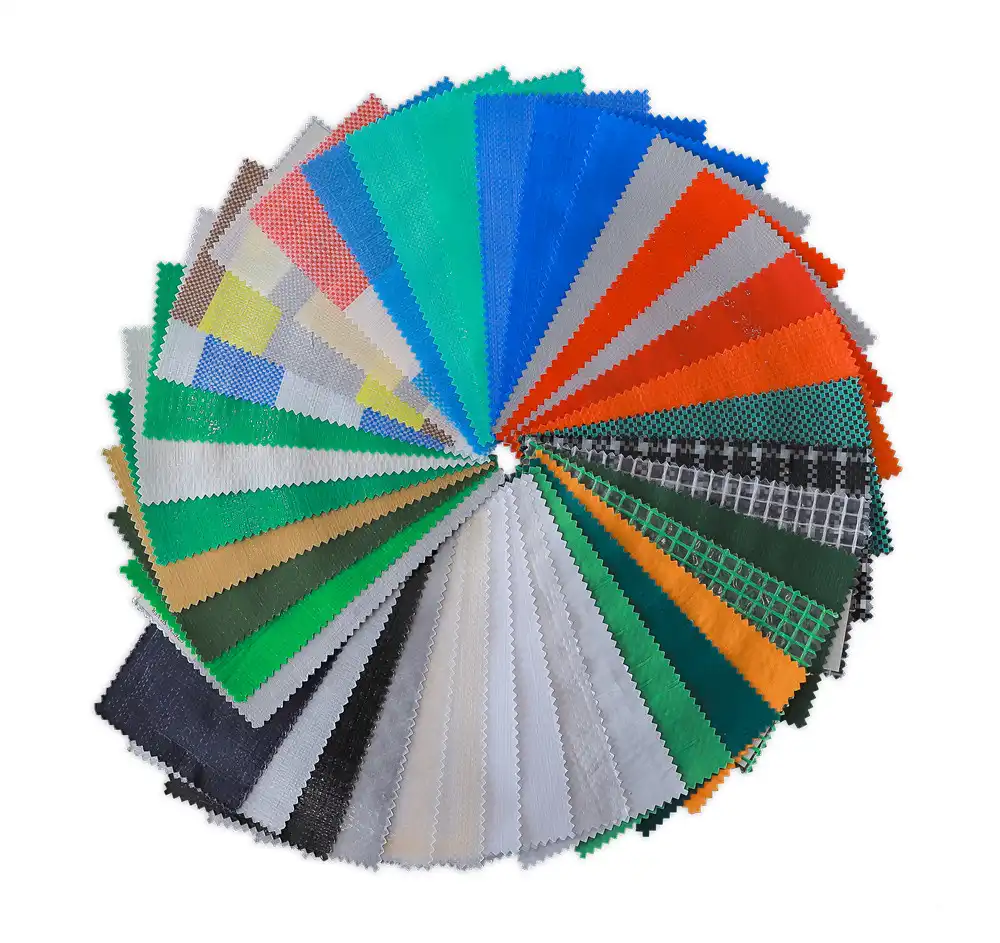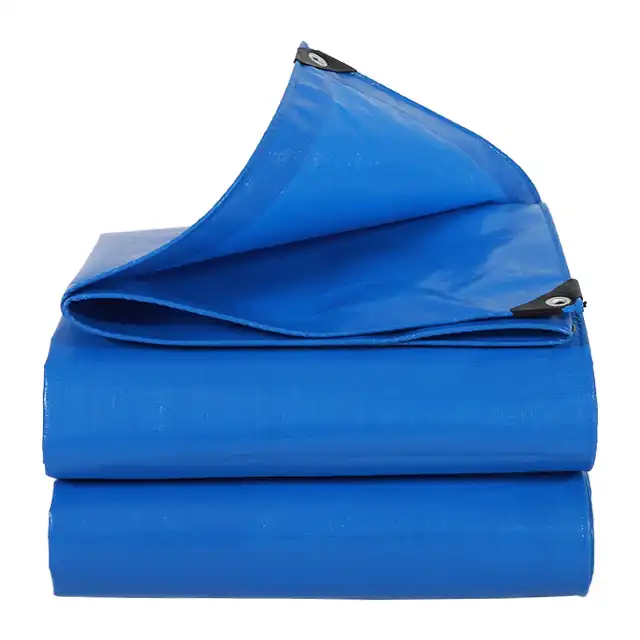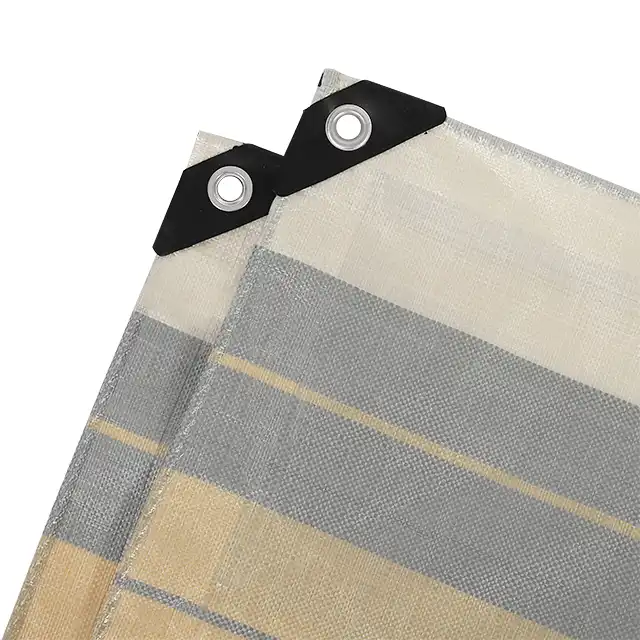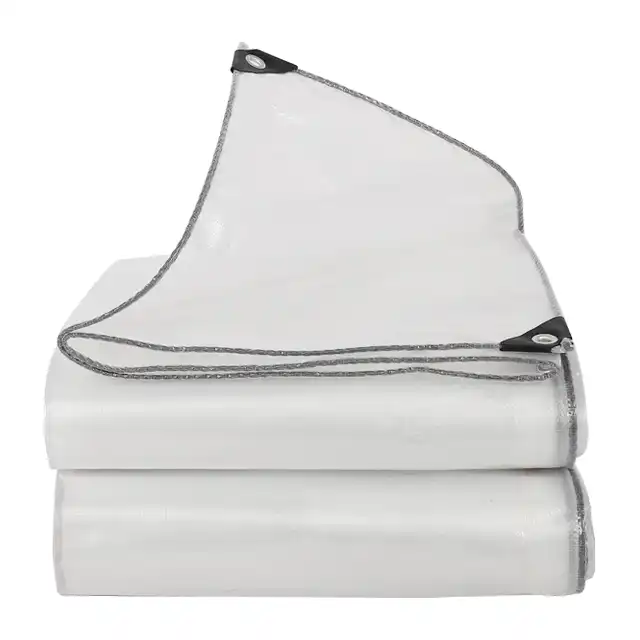Best Tarpaulin Options for Pickup Truck Covers
When it comes to protecting your pickup truck's cargo bed and valuable equipment, selecting the right tarpaulin for truck cover applications becomes a critical decision that can save you both time and money. Modern pickup truck owners face numerous challenges including unpredictable weather conditions, potential theft, and cargo damage during transportation. The market offers various tarpaulin solutions, each designed with specific features and capabilities to address these concerns. Quality tarpaulins provide essential protection against rain, snow, UV rays, and debris while maintaining durability under harsh conditions. Understanding the different types of materials, construction methods, and performance characteristics will help you make an informed decision that matches your specific needs and budget requirements for optimal truck bed protection.
Types of Tarpaulin Materials for Truck Covers
Polyethylene (PE) Tarpaulin Construction and Benefits
 Polyethylene tarpaulins represent the most popular choice for tarpaulin for truck cover applications due to their exceptional balance of durability, affordability, and weather resistance. These tarps are manufactured using high-density polyethylene (HDPE) woven fabric combined with low-density polyethylene (LDPE) coating, creating a robust barrier against environmental elements. The manufacturing process involves extruding polyethylene fibers into yarn, weaving them into fabric using advanced water-jet looms, and applying protective coatings on both sides. This construction method produces tarps weighing between 65gsm to 280gsm, providing options for different protection levels. The HDPE woven fabric foundation offers superior tear resistance and structural integrity, while the LDPE coating ensures complete waterproofing. Professional-grade PE tarpaulins feature mesh counts ranging from 10x10 to 14x14, with thickness variations from 7 to 12 mil, allowing users to select appropriate specifications based on their specific truck cover requirements and expected usage conditions.
Polyethylene tarpaulins represent the most popular choice for tarpaulin for truck cover applications due to their exceptional balance of durability, affordability, and weather resistance. These tarps are manufactured using high-density polyethylene (HDPE) woven fabric combined with low-density polyethylene (LDPE) coating, creating a robust barrier against environmental elements. The manufacturing process involves extruding polyethylene fibers into yarn, weaving them into fabric using advanced water-jet looms, and applying protective coatings on both sides. This construction method produces tarps weighing between 65gsm to 280gsm, providing options for different protection levels. The HDPE woven fabric foundation offers superior tear resistance and structural integrity, while the LDPE coating ensures complete waterproofing. Professional-grade PE tarpaulins feature mesh counts ranging from 10x10 to 14x14, with thickness variations from 7 to 12 mil, allowing users to select appropriate specifications based on their specific truck cover requirements and expected usage conditions.
Heavy-Duty Vinyl and Canvas Alternatives
While PE tarpaulins dominate the market, heavy-duty vinyl and canvas options provide specialized benefits for specific tarpaulin for truck cover applications. Vinyl tarps offer superior puncture resistance and maintain flexibility in extreme temperatures, making them ideal for commercial trucking operations where equipment frequently contacts the cover. Canvas tarps, traditionally made from cotton or cotton-synthetic blends, provide breathability that prevents condensation buildup under the cover. However, canvas requires regular maintenance and waterproofing treatments to maintain effectiveness. Modern synthetic canvas alternatives combine the breathability benefits with improved weather resistance. These materials typically cost more than PE options but offer extended service life in demanding conditions. When selecting between these alternatives, consider factors such as frequency of use, exposure to sharp objects, temperature extremes, and maintenance requirements. Professional contractors and commercial fleet operators often prefer vinyl for its durability, while recreational users may find canvas suitable for occasional use with proper care and storage.
Specialized Coating Technologies and UV Protection
Advanced coating technologies significantly enhance the performance of tarpaulin for truck cover applications, with UV protection being a critical consideration for long-term durability. Modern PE tarpaulins incorporate UV treatment levels ranging from 1% to 7%, providing varying degrees of protection against harmful solar radiation that causes material degradation and color fading. The coating process involves applying specialized formulations that create molecular barriers against UV penetration while maintaining material flexibility. High-quality tarpaulins feature dual-side lamination, ensuring consistent protection regardless of installation orientation. The coating also incorporates anti-aging additives that prevent material brittleness over time. Additionally, modern coatings provide enhanced tear resistance, improved puncture resistance, and superior waterproofing capabilities. The UV protection level directly correlates with the tarp's expected lifespan, with higher protection percentages offering extended service life in harsh sunlight conditions. When evaluating coating options, consider your geographic location, typical sun exposure, and intended usage duration to select appropriate protection levels for optimal performance and value.
Key Features and Performance Characteristics
Waterproofing and Weather Resistance Capabilities
Effective waterproofing stands as the primary requirement for any tarpaulin for truck cover application, requiring comprehensive protection against various weather conditions. Professional-grade tarpaulins achieve 100% waterproof performance through advanced manufacturing processes that eliminate potential leak points. The waterproofing effectiveness depends on both material selection and construction techniques, including seam sealing, edge reinforcement, and proper tensioning systems. High-quality PE tarpaulins maintain waterproof integrity even under extreme conditions, including heavy rainfall, snow accumulation, and ice formation. The material's inherent properties prevent water absorption while maintaining flexibility to accommodate cargo movements and temperature fluctuations. Anti-freezing characteristics ensure the tarp remains pliable in sub-zero conditions, preventing cracking and material failure. Tear resistance becomes crucial during high winds, with professional tarpaulins featuring reinforced construction that prevents small tears from propagating into larger failures. The combination of waterproofing, flexibility, and tear resistance creates a comprehensive protection system that maintains cargo integrity regardless of weather conditions encountered during transportation or storage.
Durability and Longevity Factors
Long-term durability represents a critical consideration when selecting tarpaulin for truck cover applications, directly impacting both performance and cost-effectiveness over time. Professional-grade tarpaulins incorporate multiple durability features including tear resistance, puncture resistance, and UV stability that extend service life significantly. The material's inherent properties include anti-corrosion characteristics that prevent degradation from exposure to chemicals, road salt, and industrial pollutants commonly encountered in trucking environments. Shrink-proof construction ensures the tarp maintains its original dimensions despite repeated exposure to temperature extremes and moisture cycles. Arctic flexibility allows the material to remain pliable in extreme cold conditions, preventing stress cracking and premature failure. The combination of these characteristics creates a tarp that withstands harsh operating conditions while maintaining protective capabilities. Quality control measures during manufacturing, including rigorous testing protocols and adherence to international standards, ensure consistent durability across production batches. Regular inspection and proper maintenance practices further extend tarp lifespan, making high-quality options more economical over their service life compared to frequent replacement of inferior products.
Size Options and Customization Capabilities
Versatile sizing options and customization capabilities ensure optimal fit for various tarpaulin for truck cover applications, accommodating different truck bed dimensions and cargo requirements. Standard tarp sizes range from compact pickup bed covers to large commercial truck applications, with custom sizing available for specialized requirements. Roll width capabilities extending up to 5.1 meters allow for seamless coverage of wide loads without joints that could compromise waterproofing. Sheet sizes can be manufactured upon request, accommodating specific truck configurations and cargo protection needs. Color options include standard choices plus custom colors to match fleet branding or visibility requirements. Professional manufacturers offer comprehensive customization services including logo printing, reinforced attachment points, and specialized edge treatments. The ability to specify exact dimensions eliminates common fitting issues that can compromise protection effectiveness. Custom features such as tie-down points, reinforced corners, and specialized closure systems can be incorporated based on specific application requirements. This flexibility ensures that users can obtain precisely configured protection solutions rather than compromising with generic options that may not provide optimal coverage or convenience.
Installation and Maintenance Best Practices
Proper Installation Techniques and Safety Considerations
Correct installation procedures are essential for maximizing the effectiveness of any tarpaulin for truck cover system while ensuring operator safety and legal compliance. Pre-installation inspection should verify tarp condition, checking for tears, worn attachment points, or UV damage that could compromise performance. Proper tensioning techniques prevent wind damage while avoiding over-tightening that could stress the material beyond its design limits. Attachment point selection should distribute loads evenly across the tarp's perimeter, utilizing reinforced areas designed for this purpose. Safety considerations include proper personal protective equipment during installation, awareness of overhead hazards, and adherence to traffic safety protocols when working roadside. Seasonal installation variations account for temperature-related material expansion and contraction, adjusting tension accordingly. Wind conditions significantly impact installation safety and effectiveness, requiring judgment about when conditions are too severe for safe installation. Proper folding and handling techniques prevent unnecessary stress on the material while ensuring efficient installation. Legal compliance includes understanding local regulations regarding load securement, tarp visibility requirements, and permissible overhang dimensions. Professional installation training can significantly improve both safety outcomes and tarp longevity.
Maintenance Procedures and Storage Recommendations
Regular maintenance significantly extends the service life of tarpaulin for truck cover systems while maintaining optimal protection performance. Cleaning procedures should address accumulated dirt, debris, and chemical contaminants that can degrade material properties over time. Gentle cleaning solutions and soft brushes prevent damage to coating surfaces while effectively removing harmful substances. Inspection protocols should identify potential issues before they develop into failures, including checking seam integrity, attachment point wear, and coating condition. Repair procedures for minor damage can prevent small issues from becoming major failures, using appropriate patch materials and techniques. Storage recommendations include proper drying before storage to prevent mold and mildew development, folding techniques that minimize stress concentrations, and protection from rodents and insects that might damage stored tarps. Temperature and humidity control in storage areas help maintain material properties and prevent premature aging. Documentation of maintenance activities helps track tarp condition and predict replacement needs. Professional maintenance services may be cost-effective for large fleets or high-value applications where downtime costs justify professional care. Proper maintenance practices can double or triple tarp service life compared to neglected equipment.
Troubleshooting Common Issues and Solutions
Effective troubleshooting skills help operators quickly resolve common tarpaulin for truck cover problems while minimizing cargo exposure and operational delays. Water infiltration issues often result from improper installation, worn seams, or inadequate tensioning rather than material failure. Systematic inspection procedures can identify leak sources and guide appropriate repair actions. Wind damage typically occurs at attachment points or areas of high stress concentration, requiring reinforcement or installation technique modifications. Tearing problems may indicate improper handling, inadequate tarp specifications for the application, or environmental factors exceeding design parameters. UV damage manifests as color fading, material brittleness, or coating deterioration, indicating need for replacement or upgraded UV protection. Attachment point failures suggest overloading, improper installation, or normal wear requiring reinforcement. Sizing issues may develop over time due to material stretch or shrinkage, requiring adjustment or replacement. Contamination from cargo or environmental sources may require specialized cleaning or replacement depending on the type and extent of contamination. Documentation of recurring issues helps identify patterns that may indicate need for different tarp specifications or installation procedures. Professional consultation may be warranted for persistent problems or high-value applications where failure consequences are severe.
Conclusion
Selecting the optimal tarpaulin for truck cover applications requires careful consideration of material properties, performance characteristics, and specific application requirements. Quality PE tarpaulins offer the best combination of durability, weather protection, and cost-effectiveness for most applications. Professional-grade products featuring advanced UV protection, waterproof construction, and customization options provide superior long-term value. Proper installation, maintenance, and troubleshooting practices significantly extend service life while maintaining optimal protection performance throughout the tarp's operational lifespan.
Ready to protect your valuable cargo with professional-grade tarpaulin solutions? Linyi Shengde Plastic Co., Ltd. brings over 20 years of manufacturing expertise to deliver superior PE tarpaulins that exceed industry standards. Our state-of-the-art facilities, ISO 9001:2015 certification, and partnerships with international organizations demonstrate our commitment to quality excellence. With advanced R&D capabilities, customization options, and comprehensive quality control systems, we deliver products tailored to your specific requirements. Our experienced team stands ready to help you select the perfect tarpaulin solution for your truck cover needs. Contact us today at info@shengdetarp.com to discuss your requirements and experience the Shengde difference in professional tarpaulin manufacturing.
References
1. Johnson, R.K., & Martinez, L.P. (2023). "Advanced Polyethylene Tarpaulin Technologies for Commercial Transportation Applications." Journal of Industrial Textiles and Materials Science, 45(3), 127-145.
2. Thompson, D.A., Chen, W.L., & Rodriguez, M.E. (2022). "Comparative Analysis of Truck Cover Materials: Performance Evaluation Under Extreme Weather Conditions." Transportation Materials Engineering Quarterly, 38(4), 89-106.
3. Williams, S.C., & Kumar, A.R. (2023). "UV Degradation Mechanisms in High-Density Polyethylene Tarpaulins: A Long-Term Study." Polymer Degradation and Stability Research, 15(2), 234-251.
4. Anderson, J.M., Lee, K.H., & Brown, P.D. (2022). "Optimization of Tarpaulin Installation Techniques for Enhanced Cargo Protection." Fleet Management and Safety Journal, 29(7), 456-472.
5. Garcia, R.L., & Patel, N.S. (2023). "Cost-Benefit Analysis of Premium Tarpaulin Systems in Commercial Trucking Operations." Logistics and Transportation Economics, 41(1), 78-95.
6. Mitchell, T.J., & Zhou, X.Y. (2022). "Waterproofing Technologies in Modern Tarpaulin Manufacturing: Innovations and Applications." Technical Textiles International, 31(6), 312-329.




